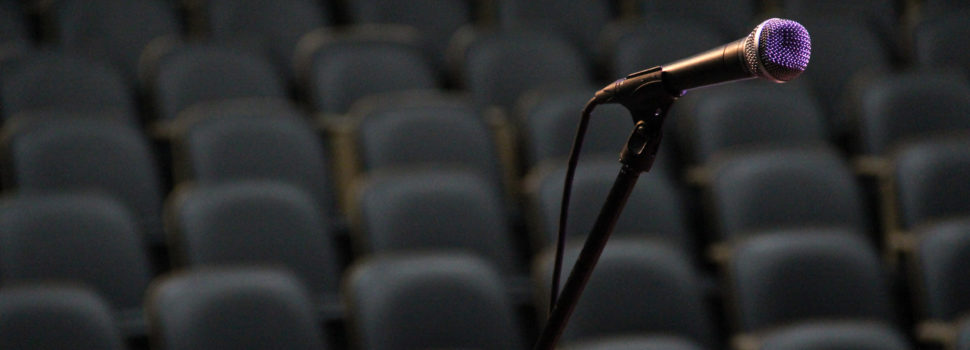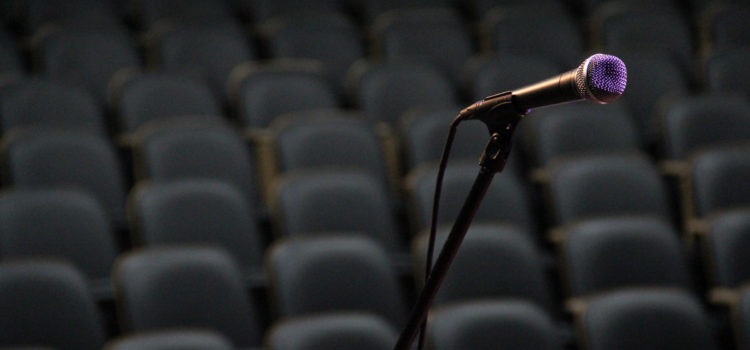

This is Why You Need a Directional Microphone
ElectronicsEntertainmentReviews December 12, 2018 Beau 0

Some microphones are designed to hear equally in all directions (omnidirectional), and some are designed to be more sensitive in certain directions. Directional microphones can be a big advantage when such a microphone is used in a hearing aid or in an Assistive Listening Device (ALD), because it can be used to enhance some sound that you need to hear. A directional microphone picks up sound from specific directions.
Directional microphones allow you to focus on picking up sounds from very small pathways directly in front of listeners. The use of a directional microphone is more advantageous than using a traditional omnidirectional microphone in a lot of situations. The most advanced directionality comes from using multiple microphones. With two or three microphones, the directionality is improved because the shorter distance between microphones allows them to be hyper-selective about which sounds to cancel and which sounds to concentrate on.
Today, we are going to take a look at the directional microphone and some of the best on the market.
As mentioned, directional microphones pick up sound primarily from one end of the device. The most common type of directional mic is called “cardioid” for the upside down heart-shaped pickup pattern. This type of mic favors sound from the front, while still picking up some sound on the sides. Virtually no sound is received at the back of the microphone. This type of pickup pattern helps to reject background noise and accentuate the sounds you want to record, whether that is a voice, music or sound effects.
There are two main variations of the cardioid design, the super-cardioid and hyper-cardioid. Each has a progressively narrow sweet spot while rejecting more sound from the sides of the mic. The ultimate in directionality is the shotgun microphone. These mics are extremely sensitive towards the front with small bumps of pickup to the side and rear. This means you can either pick up sound from further away or better isolate the sound close up. Because they’re so sensitive, they also tend to pick up more handling noise. That’s why you’ll often see them mounted in some type of shock absorbing device.
Best Hyper-Cardioid: AKG C1000s Multipatter
AKG C1000s is an inexpensive all-around mic with a switchable cardioid / hypercardioid pattern. It has a signature bright sound that creates an illusion of higher fidelity but also helps to clear up the sound in a live environment. Definitely not the highest quality mic, but if used correctly it can produce very decent results for instruments and female vocals. For videographers, it isn’t recommended. There are simply no viable mics at this price range, so don’t even hope for a cheap booming solution. This mic requires a bit of patience to set up – positioning will play a crucial role in getting a good sound out of it.
Most of the small diaphragm mics available on the market have a flat frequency response, so they sound more or less similar. However, the AKG C1000s does not sound like the rest. It is much brighter and creates a richer more vibrant sound that sounds more expensive. It is extremely useful for live performances. This mic clears the little things up and efficiently cuts through where flatter mics don’t.
Best Super-Cardioid: Shure Beta 58A
Super-cardioid microphones use an even tighter pickup area at the head of the mic, quickly taper to reject sound from the sides and have a very small lobe of sensitivity near the rear of the mic.This makes them great for the studio and for live performances. Shure Beta 58A is a great performance supercardioid mic, capable of delivering nice and clean vocals without killing your budget.
Adequately bright but unobtrusive in character, it will do a great job of clearing up vocals while keeping the over complicated surrounding sounds. It has a linear response throughout the entire vocal range, which is especially appreciated by versatile singers. The Shure Beta 58a is very easy to work with, both for singer and sound engineer alike. It is also quite durable and definitely a great buy.
Best Shotgun Microphone: Sennheiser MKE 600
This microphone is a fantastic quality, 10” short-range shotgun. Although considered an entry model, which is available at rather modest price, it can deliver a professional sounding performance! Moreover, I’d say this mic is probably the best raw performer in its range. This is not only about the quality but also about the design.
The Sennheiser MKE 6000 also performs great in both close and open areas without relying on post EQ. It is reasonably flat and while peaking in the upper range with a slight 2-3 dB boost it gives just about enough presence not to sound lame. It seems, Sennheiser took best of both mics for their MKE 600, and then improved it even further.
When it comes to short shotguns, Sennheiser MKE 600 is the deal. Of course, it is more expensive than other entry-level models, but you get a superior performance. This mic is such a great deal that every videographer should definitely consider having it in their equipment bag.











No comments so far.
Be first to leave comment below.